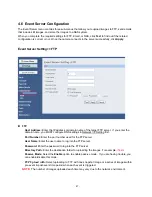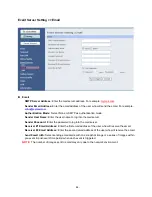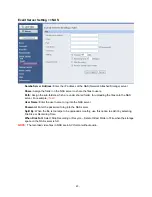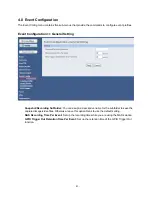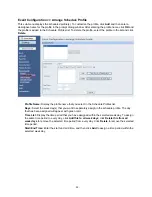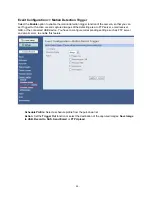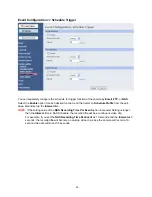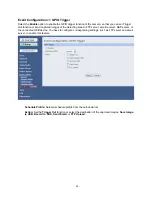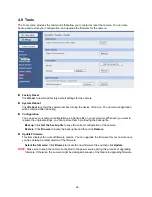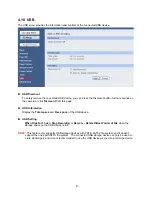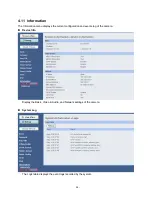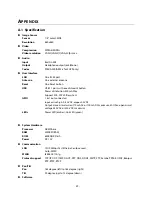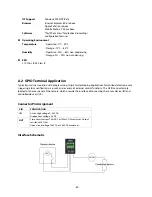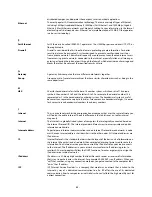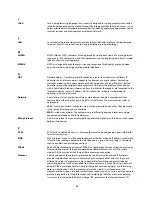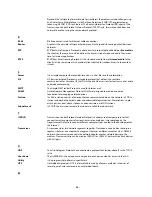
- 61 -
A.3 Glossary of Terms
NUMBERS
10BASE-T
10BASE-T is Ethernet over UTP Category III, IV, or V unshielded twisted-pair media.
100BASE-TX
The two-pair twisted-media implementation of 100BASE-T is called 100BASE-TX.
A
ADPCM
Adaptive Differential Pulse Code Modulation, a new technology improved from PCM, which
encodes analog sounds to digital form.
AMR
AMR (Adaptive Multi-Rate) is an audio data compression scheme optimized for speech
coding, which is adopted as the standard speech codec by 3GPP.
Applet
Applets are small Java programs that can be embedded in an HTML page. The rule at the
moment is that an applet can only make an Internet connection to the computer form that
the applet was sent.
ASCII
American Standard Code For Information Interchange, it is the standard method for encoding
characters as 8-bit sequences of binary numbers, allowing a maximum of 256 characters.
ARP
Address Resolution Protocol. ARP is a protocol that resides at the TCP/IP Internet layer that
delivers data on the same network by translating an IP address to a physical address.
AVI
Audio Video Interleave, it is a Windows platform audio and video file type, a common format
for small movies and videos.
B
BOOTP
Bootstrap Protocol
is
an Internet protocol that can automatically configure a network device
in a diskless workstation to give its own IP address.
C
Communication
Communication has four components: sender, receiver, message, and medium. In networks,
devices and application tasks and processes communicate messages to each other over
media. They represent the sender and receivers. The data they send is the message. The
cabling or transmission method they use is the medium.
Connection
In networking, two devices establish a connection to communicate with each other.
D
DHCP
Developed by Microsoft, DHCP (Dynamic Host Configuration Protocol) is a protocol for
assigning dynamic IP addresses to devices on a network. With dynamic addressing, a device
can have a different IP address every time it connects to the network. In some systems, the
device's IP address can even change while it is still connected. It also supports a mix of static
and dynamic IP addresses. This simplifies the task for network administrators because the
software keeps track of IP addresses rather than requiring an administrator to manage the
task. A new computer can be added to a network without the hassle of manually assigning it
a unique IP address. DHCP allows the specification for the service provided by a router,
gateway, or other network device that automatically assigns an IP address to any device that
requests one.
DNS
Domain Name System is an Internet service that translates domain names into IP addresses.
Since domain names are alphabetic, they're easier to remember. The Internet however, is
really based on IP addresses every time you use a domain name the DNS will translate the
name into the corresponding IP address. For example, the domain name
www.network_camera.com
might translate to
192.167.222.8
.
E
Enterprise network
An enterprise network consists of collections of networks connected to each other over a
geographically dispersed area. The enterprise network serves the needs of a widely

